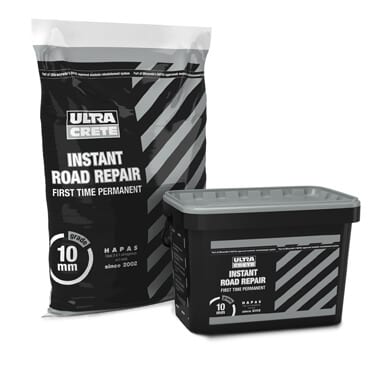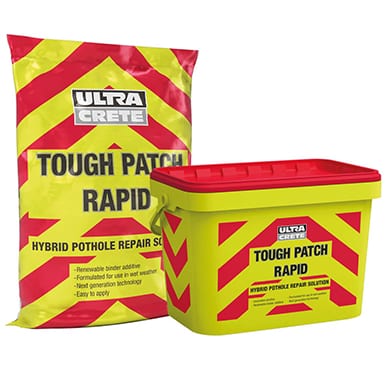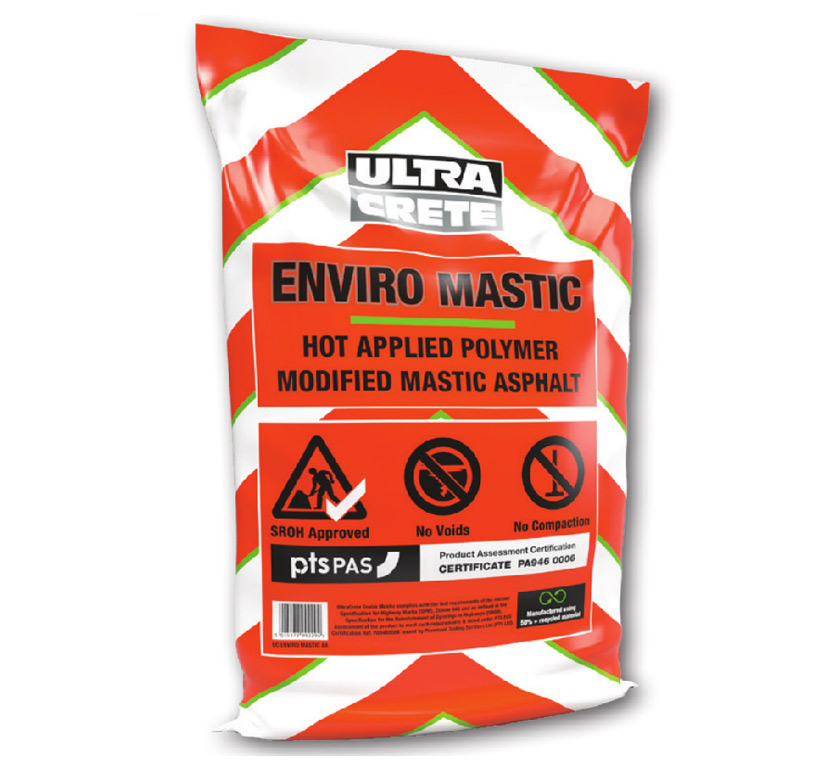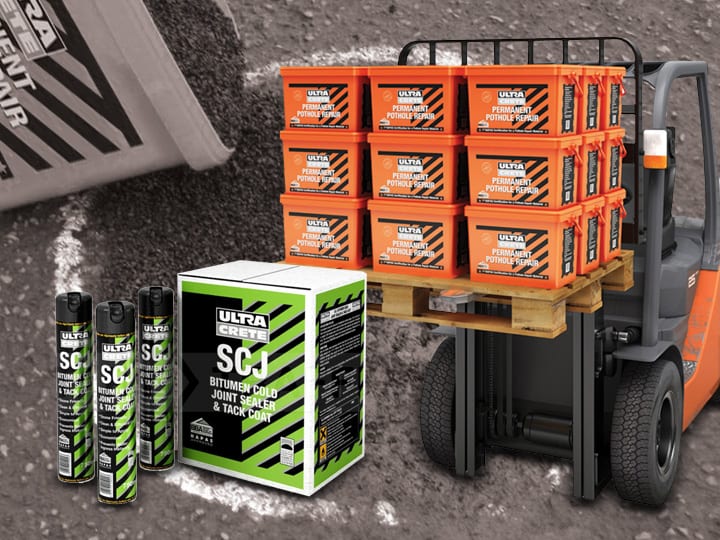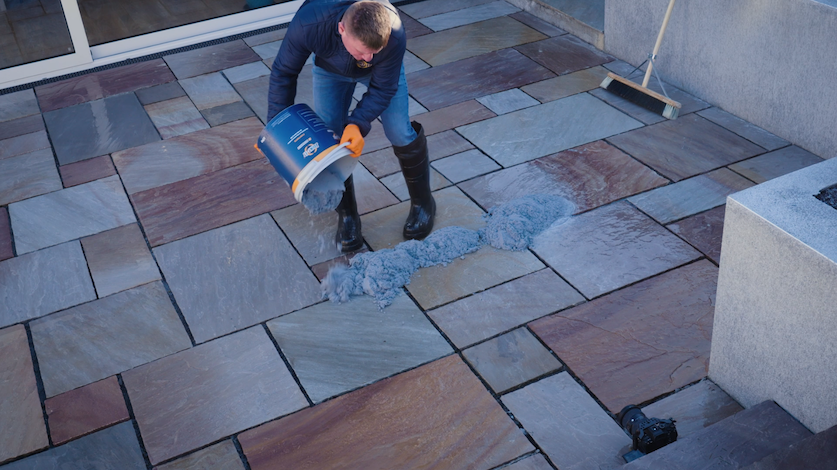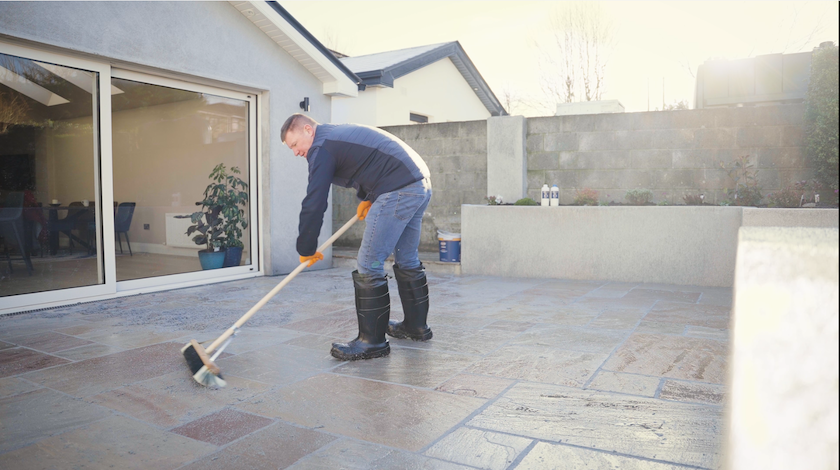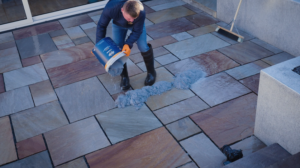Brush-up on the grades and options available for premixed pothole repair products and the recommended ancillary items in our complete guide to cold-lay tarmacs.
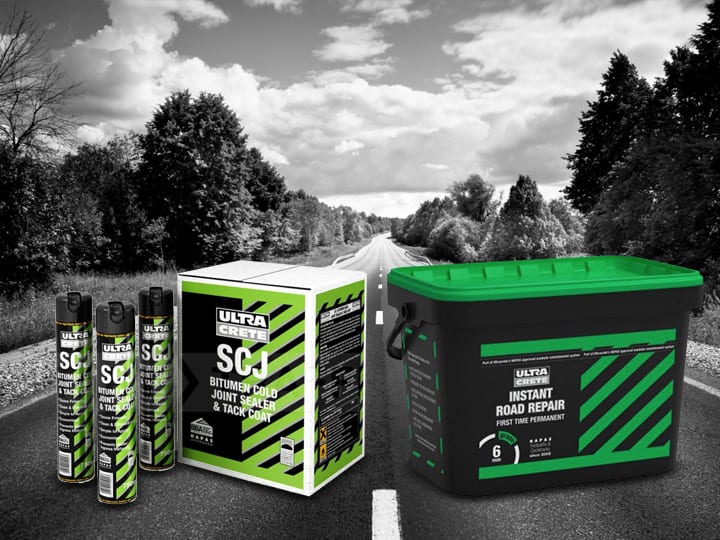
Whether you’re doing extensive surface repairs on a commercial scale or fixing the odd pothole in a driveway, it’s best to choose the right cold-lay tarmac for the job.
Read on to find out which grade of ready-made, bitumen-based asphalt will be best for your pothole repairs.
Cold-lay tarmac options and grades
Just as there are many different types of surfaces to repair, there are many different grades of cold-lay tarmacs to match.
When choosing a cold-lay tarmac grade you should consider three main things: the type of surface you’re repairing, size of the reinstatement and weather conditions at the time of application.
Q1: What type of surface are you repairing?
Driveways, pedestrian pathways, cycle tracks, car parks, airport surfaces, minor roads, dual carriageways, motorways…
They all may need surface repairs at some point or other, and for these pothole fixes there is a cold-lay tarmac for the job.
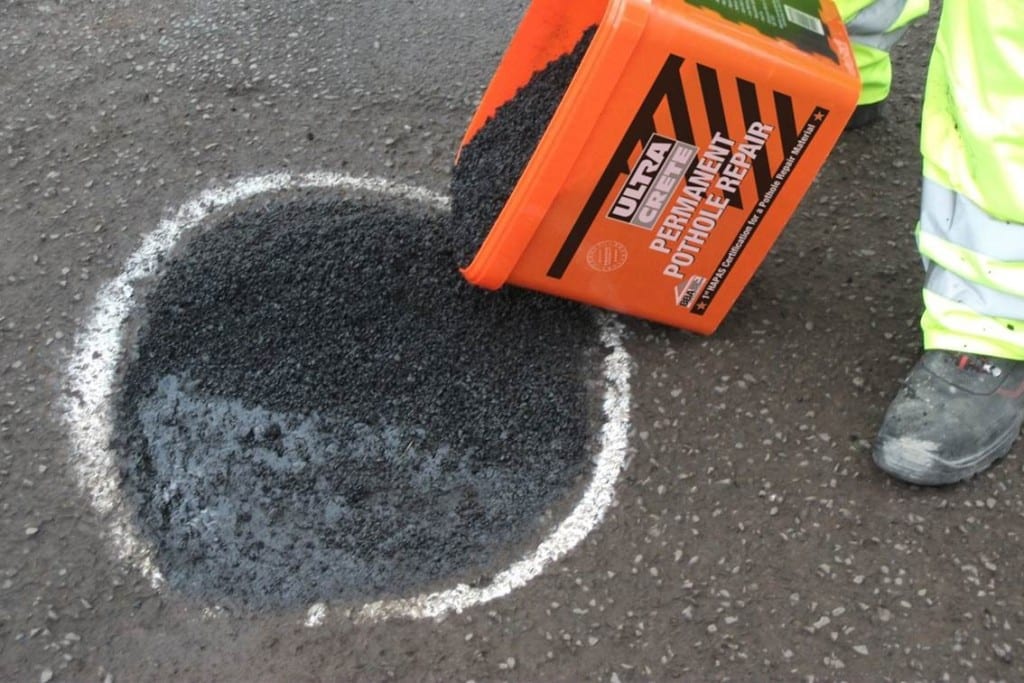
Cold-lay asphalts with larger aggregate – usually 10mm – will offer a much stronger formula.
“This is why 10mm tarmac is used in all carriageways,” explains Tom Hughes from the Ultracrete team at Instarmac, one of the industry’s leading manufacturers of quality cold-lay asphalt.
“Contractors are more likely to require a 10mm-grade formula for any heavily trafficked areas, and particularly those areas that require extra skid resistance for common braking or turning zones.”
Instant Road Repair (IRR) 10mm (which is HAPAS approved under the Highways Authority Product Approval Scheme) and Tough Patch (a water activated hybrid – more on that later) both offer robust formulas that are equipped to meet the industry standards for safe, skid-resistant surfaces.
See the table below to see which pothole repair jobs in the Ultracrete range are recommended for certain types of surfacing projects.
Q2: What’s the size of the reinstatement?
The size of the hole that needs reinstating generally can dictate the size of aggregate you need in your cold-lay formula.
Tom shares, “The size of the reinstatement, combined with the type of surface and whether you need a temporary or permanent repair, will give you an idea about what type of cold-lay asphalt you need.”
Essentially, there are three grades of cold-lay tarmac. A 3mm grade of smallest aggregate (as in Permanent Pothole Repair, also known as PPR) a 6mm grade of aggregate and a 10mm grade containing larger aggregate.
See the table below to explore which grade of cold-lay asphalt is best for certain resurfacing jobs.
Q3: What are the weather conditions during application?
The final variable that may sway you between using one cold-lay asphalt and another are the weather conditions at the time of application.
If the weather is wet, it is recommended to choose a grade that can cope with these conditions and will not undermine the asphalt formula.
Wet weather formulas, such as PPR Wet and Tough Patch are particularly for streetworks contractors working on larger scale repairs to roads and heavily trafficked areas.
For smaller tarmac repairs that warrant a different cold-lay formula, we recommend avoiding heavy rain during application.
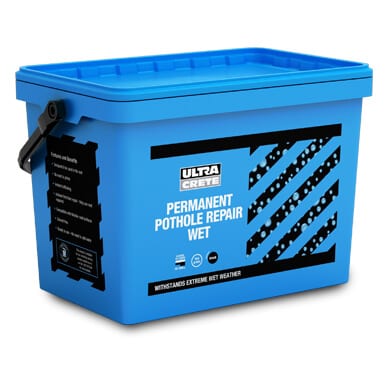
Which cold-lay tarmac to use?
See our quick-reference table to help you choose the right cold-lay tarmac for the repair job.
This table includes the quality products available in the Ultracrete range from the surfacing experts at Instarmac.
The formulas come highly recommended for their ease of application and quality mixes that stand the test of time.
Follow the links to find out more about each of these products so you can easily decide which one is best for the job at hand.
Cold-lay tarmac | Pothole depth | Type of job |
Up to 45mm | Minor or shallow holes & defects | |
15–100mm | Footpaths & cycle tracks | |
30–100mm | Type 3 & 4 roads | |
10–100mm | Roads, driveways & car parks | |
10–100mm | Trafficked areas & during wet weather | |
Up to 60mm | All areas, especially heavily trafficked & during wet weather | |
Tough Patch 10mm* | Up to 100mm | All areas, especially heavily trafficked & during wet weather |
Please note: many of the above products are available in both bags and tubs.
* Tough Patch 10mm is available to order over the phone – call us on 0330 122 1025 to place an order or for further details.
What are the different types of cold-lay tarmacs?
There are two main types of cold-lay tarmacs to consider:
- Bitumen and solvent-based cold-lay tarmacs
- Hybrid formulas activated by water
Bitumen & solvent based tarmacs
A mix of bitumen, solvent and a binder additive creates a cold-lay tarmac that hardens after compaction. These types of cold-lay tarmacs – such as IRR and PPR – cure over time when the solvent evaporates.
Very cost effective, they are the ideal choices for general pothole repairs.
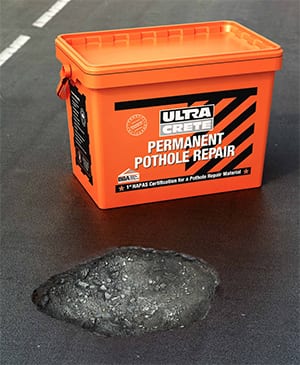
Formulas activated by water
An alternative premixed cold-lay to the bitumen and solvent based formulas is a cold-lay tarmac that is activated when water is added to the mix.
Tough Patch is a great example. Containing an innovative reactive binder, Tough Patch can cure within an hour after sprinkling water across each layer during application.
Massively skid-resistant, Touch Patch is ideal for reinstatements at junctions and crossroads. The robust formula is also resistant to rutting and scuffing.
Pothole repair hints and tips
Take a look at the essential hints and tips for pothole repairs.
For more advice on pothole repairs, see our cold-lay tarmac FAQs.
How to repair small potholes
Use one of the premixed cold-lay tarmacs outlined above to reinstate minor or shallow potholes.
For a permanent pothole fixes of small reinstatements, we strongly recommend following these steps:
- Use a circular saw to cut vertical, straight edges around the hole
- Remove all debris
- Seal the area with a cold joint spray (see below for more on these)
- Apply the cold-lay tarmac at the recommended depths
- Thoroughly tamp down the formula
- Apply overbanding tape to seal the edges
How to repair large potholes
If the tarmac is severely damaged, or the potholes are quite large, we recommend removing the top 6mm layer of the damaged tarmac and laying a new 6mm topping. The new layer will then bond more easily to the surface below.
Follow the steps above for small pothole fixes, applying layers of the cold-lay formula as directed in the manufacturer’s instructions.
Why cold joint spray is recommended
As any experienced surfacing specialist will say, a cold joint spray is strongly recommended for a permanent reinstatement, if not essential.
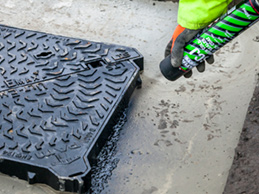
Using a quality cold joint spray like SCJ spray allows you to seal the edges and surfaces when adding layers of cold-lay formula.
The spray itself helps to reduce the risk of water ingress in the reinstatement and seals the reinstatement to the hole.
Cold joint spray substantially improves the bond of the old reinstatement to the new, ensuring a pothole fix that stands the test of time.
The benefits of overbanding tape
Another important ancillary tool in the world of pothole repair is Instaband ECO bitumen tape.
After completing a reinstatement, and tamping down the filler with a tamp or wacker plate, seal the edges with Instaband ECO and finish with a blowtorch.
Bitumen tape is a final touch for preventing water ingress and pothole failures.
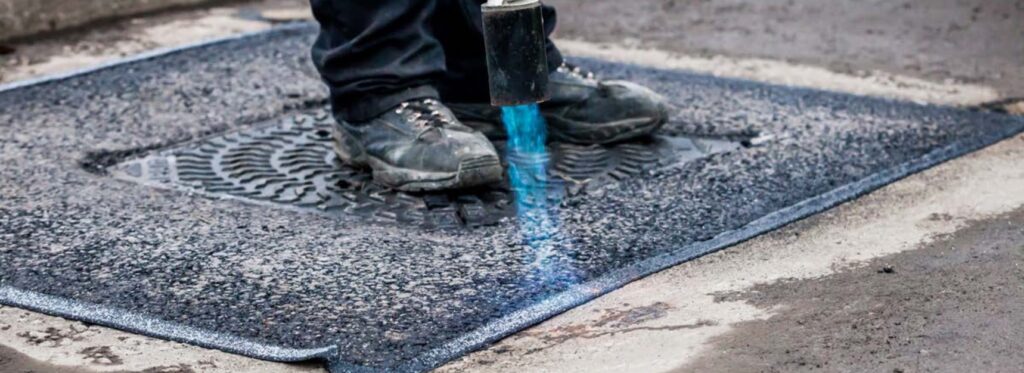
What to do if your cold-lay tarmac has gone hard
First of all, don’t stress if a cold-lay formula appears a little stiffer than usual in the bag or tub. A hardened bag of cold-lay tarmac is very fixable.
Apply a light pressure on the side of the bag by rolling your knee over the edge. Only a small amount of pressure is needed to return the tarmac to its required consistency.
Once rolled over with the knee, the binder will activate and loosen the material up again.
Commonly, a bag of cold-lay tarmac may go hard before use if the bag was placed at the bottom of a pallet, making it a little more compacted under the pressure of the other bags. It may have also been stored on a cold floor.
Sometimes the formula can stiffen if it is coming towards the end of its shelf life. Whether stored in a bag or tub, cold-lay tarmac has a six-month shelf life from the date of manufacture, which can usually be found on the side of the bag or on the lid.
Hot-lay tarmac option for pothole repairs
A hot-lay asphalt is now available as a hot formula that comes from a bag.
Ultracrete’s Enviro Mastic is applied as a molten mastic surfacing material after being heated to the right temp in a pre-heated mastic mixer.
SROH approved, Enviro Mastic is another easy-to-use reinstatement product for repairing many types of surfaces including carriageways, footways, footpaths, cycle tracks, street furniture and access covers.
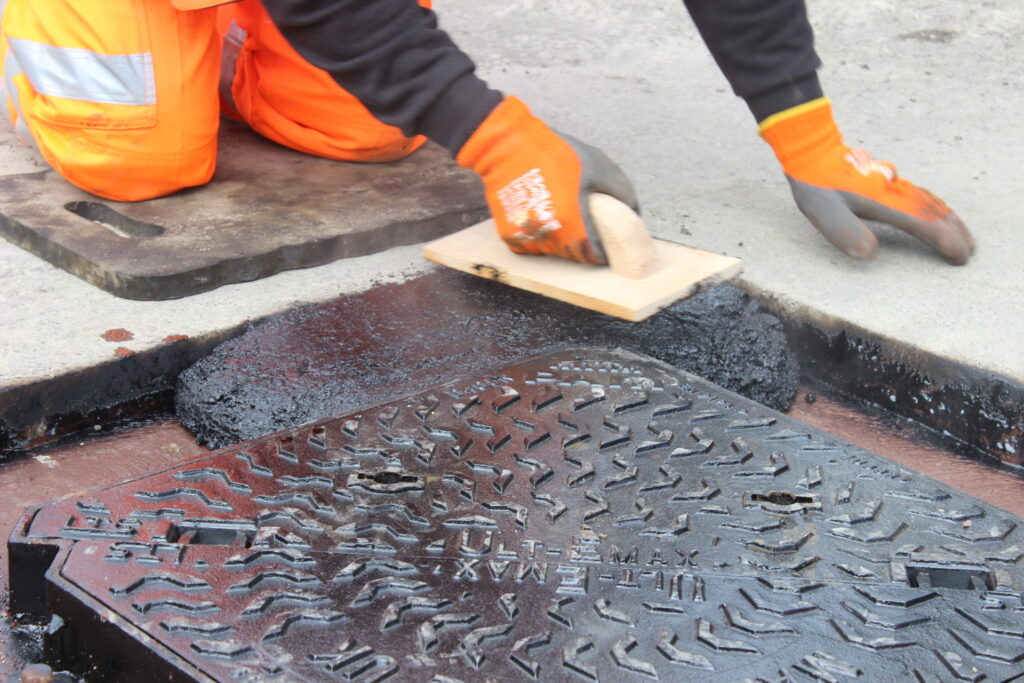
We're here if you have any questions
If you have a burning question about cold and hot-lay tarmacs, get in touch with our team to find out more.
At The Paving Experts we have the full range of quality premixed tarmacs from Ultracrete and a handy array of ancillary items to assist you in fixing potholes quickly and for good!
Huge discounts are available on bulk orders together with many combination deals when buying cold-lay formulas together with SCJ spray.
Great combination deals include:
Permanent Pothole Repair deals
Instant Road Repair deals
- IRR 6mm x 26 tubs + 12 x cans of SCJ spray
- IRR 6mm x 52 tubs + 12 x cans of SCJ spray
- IRR 10mm x 52 tubs + 12 x cans of SCJ spray
Plus! Many pallet and part-pallet deals are available on all types and grades of cold-lay tarmac.
Call us on 0330 122 1025 (Mon-Fri, 8.30am-5.30pm) for our best deals.

